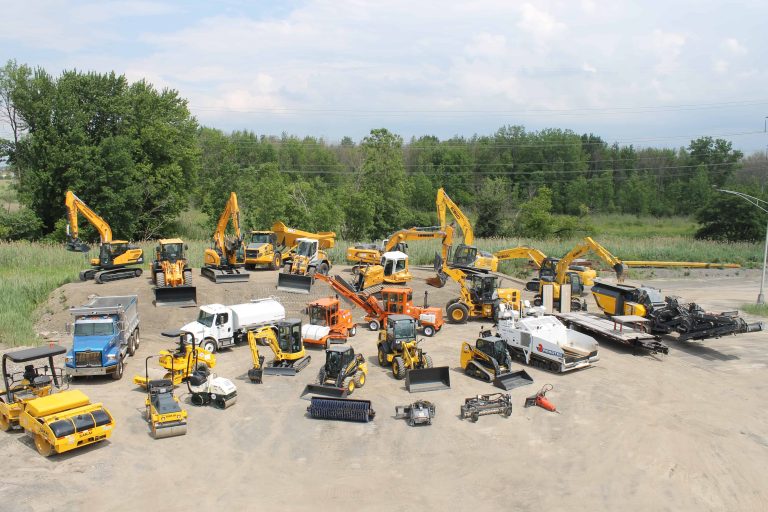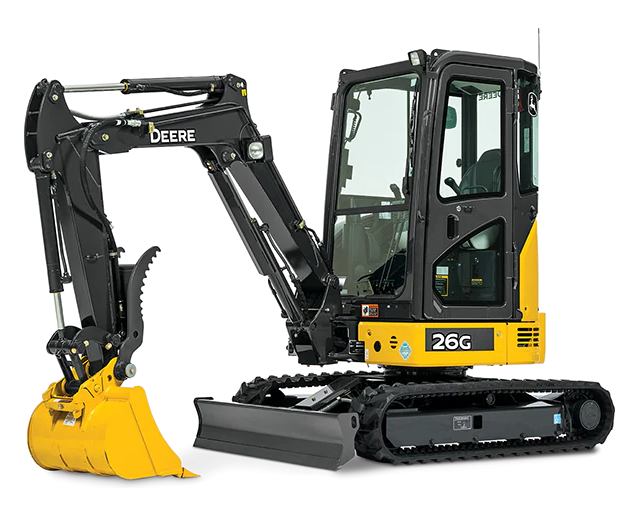Heavy Equipment Rental: Large Machinery for Any Construction Task
Heavy Equipment Rental: Large Machinery for Any Construction Task
Blog Article
Optimize Your Spending Plan by Recognizing the Prices Connected With Building And Construction Devices Services
Comprehending the complete scope of expenses connected with building and construction equipment leasings is crucial for maximizing your budget plan. What approaches can be employed to successfully take care of these costs and guarantee a much more reliable rental experience?
Introduction of Rental Costs
When taking into consideration building equipment services, understanding the linked expenses is paramount for efficient budgeting and project preparation. Rental costs can differ significantly based upon several aspects, including tools kind, period of leasing, and area. The preliminary rental fee commonly reflects the devices's market need and its associated functional capabilities, influencing the total expense.
Along with the base rental price, ancillary expenses might arise, such as transportation costs, gas surcharges, and upkeep costs. It is important to make up these additional costs to precisely analyze the total expense of leasing tools. In addition, the rental period can affect prices; longer services might receive discounted rates, while temporary services could incur higher daily fees.

Malfunction of Rental Rates
A thorough understanding of rental prices is crucial for professionals and project managers intending to maximize their spending plans. Rental rates for building devices usually consist of several parts, consisting of base rates, time-based charges, and use costs.
Base rates are the core charges related to the service of the devices, typically identified by the kind and dimension of the machinery. These prices can differ considerably, influenced by variables such as devices demand, schedule, and regional market fads. Time-based fees, which may be daily, weekly, or monthly, offer to accommodate various job timelines and rental durations.
In addition, rental rates might include use charges, which apply when tools is used beyond a defined threshold, making certain that the rental business can make up deterioration. Seasonal need changes can also impact rental prices, with peak building periods normally commanding greater prices.
Additionally, understanding the rental business's policies relating to upkeep and insurance coverage can provide additional understanding into the general cost structure. By assessing these elements, service providers can make informed choices, making certain the selection of rental devices aligns with both job needs and budget restrictions.
Added Fees to Consider
Comprehending the ins and outs of added costs is crucial for professionals to manage their general leasing expenses effectively. Beyond the common rental prices, numerous additional charges can substantially affect the overall price of equipment service. These fees commonly consist of delivery and pick-up fees, which can vary based upon distance and logistics included in transferring the tools to and from the work site.
Additionally, some rental business may impose gas additional charges if the equipment is returned with much less gas than when rented out. It is likewise vital to know potential cleaning costs, specifically for customized tools that requires comprehensive maintenance after use.

Thoroughly examining the rental arrangement and clearing up these added charges in advance can assist specialists stay clear of unforeseen prices and ensure that budget plans stay undamaged throughout the job lifecycle.
Repair And Maintenance Expenses
Routine upkeep and repair expenses are often forgotten factors that can considerably influence the total expense of building equipment leasings. When renting out devices, it is essential to take into consideration not only the rental costs however likewise the possible costs related to keeping the equipment in optimum operating problem.
Numerous rental companies include standard upkeep as part of the rental agreement; however, a lot more extensive repairs or unanticipated malfunctions can bring about added costs. It's important to examine the rental agreement carefully to recognize what upkeep solutions are covered and what duties drop on the occupant.
Additionally, equipment that is not properly maintained can cause inefficiencies on the job site, possibly causing delays and enhancing project costs. To minimize these threats, it is suggested to perform normal assessments and keep open communication with the click this rental provider pertaining to any type of issues that develop during usage.
Insurance and Liability Costs
Insurance and responsibility costs are critical components that can substantially impact the total expenditure of building devices leasings (boom lift rental). These expenses ensure that both the rental company and the client are shielded from possible monetary losses developing from crashes, damages, or theft during the rental period

Additionally, clients need to understand any deductibles or exclusions in the insurance plan, as these can impact possible out-of-pocket expenses. Recognizing the conditions of any kind of insurance policy coverage is essential to avoid unforeseen prices. Inevitably, budgeting for insurance and responsibility expenses can aid make sure a smoother rental experience and safeguard against economic threats connected with building projects.
Final Thought
In conclusion, a detailed understanding of the prices connected with building and construction devices leasings is necessary for reliable budget monitoring. Ultimately, informed decision-making concerning equipment rentals adds to the general success of construction endeavors.
Rental prices can vary considerably based on several variables, including equipment kind, duration of service, and place (mini excavator rental). The rental period can influence prices; longer services may certify for reduced rates, while temporary rentals may incur greater daily costs
By conducting thorough research study and engaging with trustworthy rental business, contractors can properly browse the complexities of rental rates, eventually optimizing their monetary sources.
Beyond the typical rental rates, numerous additional costs can considerably affect the complete cost of tools service. Rental companies usually provide obligation insurance policy that covers injuries to third celebrations or damages to home, while tools damages insurance can cover the expense of fixings or replacement if the rented devices is harmed.
Report this page